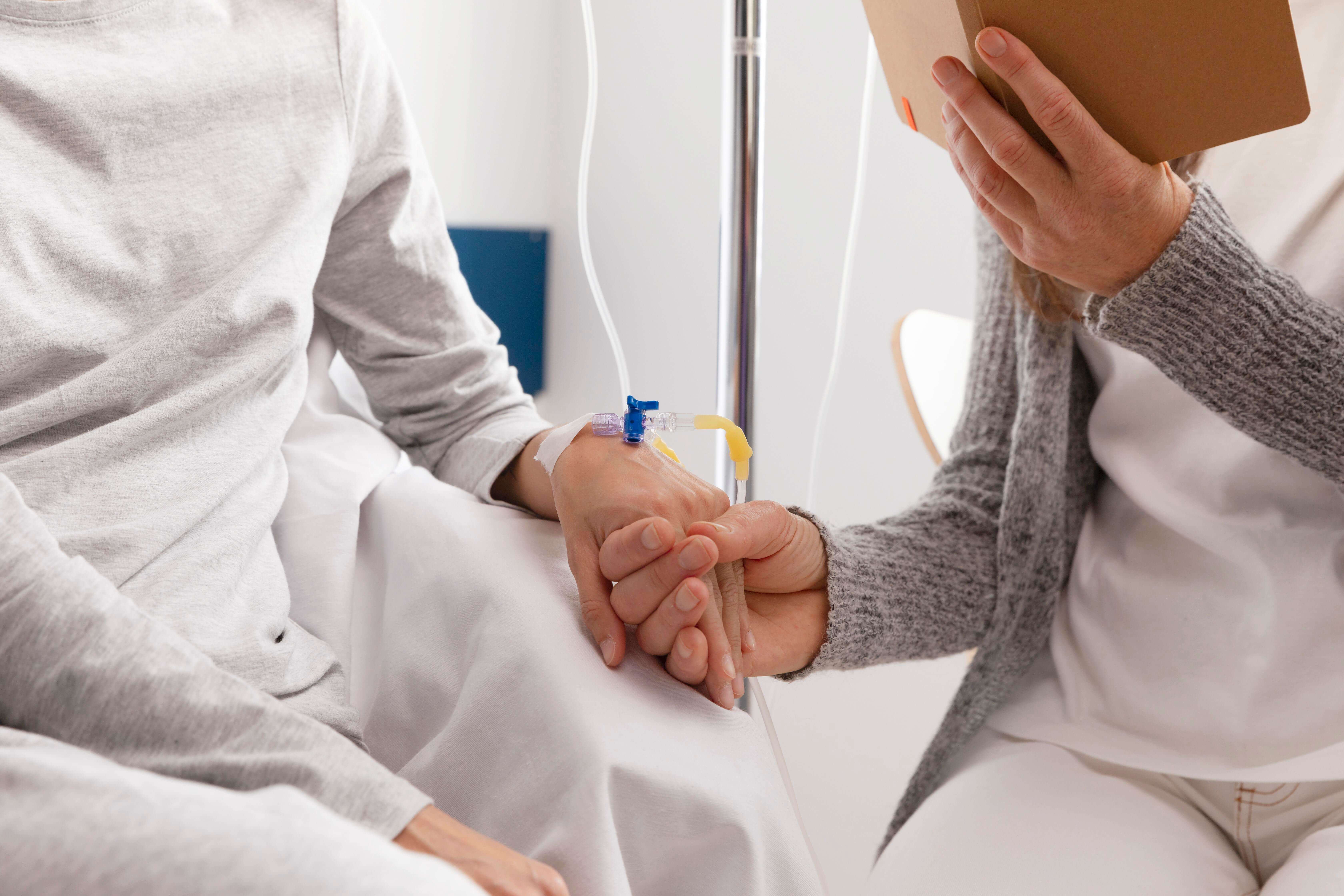Navigating the final stages of life for a loved one can be overwhelming and emotionally draining. The comfort and dignity of the patient take the front stage during this period. Managing symptoms and guaranteeing the best possible quality of life in their last days depend much on an end of life medication protocol. Designed to meet both physical and emotional needs, this protocol helps terminally ill patients pass away gently and with the least suffering.
But what exactly does end-of-life medication do? These drugs mostly help with pain, anxiety management, nausea reduction, and other upsetting symptoms. Through this, they help patients find peace and comfort during what might be a physically and emotionally taxing period.
Closely working with families, care teams at hospice centers create customized treatment plans that fit each patient's particular needs. The objective is to guarantee that the patient spends as much comfort as possible during her remaining days rather than to prolong life artificially. Designed to fit the particular symptoms of the patient, the end-of-life medication protocol helps control pain and creates an environment free from distractions so family members may concentrate on spending valuable, quality time with their loved ones.
Common End-of-Life Medications and Their Role in Treatment
Hospice care depends fundamentally on medications. Care teams can cover a broad spectrum of symptoms experienced by patients approaching the end of life by using particular common hospice medications. Customized to the particular need of the patient, the hospice medication protocol consists mostly of these drugs. Below are some of the most common types of medications and their intended effects:
- Opioids (Morphine or Oxycodone): The pillar of pain management in hospice treatment. Common in terminal diseases, moderate to severe pain can be quite effectively reduced with opioids. For those who suffer from respiratory problems, they also provide comfort by helping to reduce breathlessness.
- Benzodiazepines (Lorazepam, Midazolam): Anxiety and agitation can increase as patients get close to their end of life. Benzodiazepines help to relax the nervous system, thus reducing the above symptoms. These drugs can also help control sleeplessness, so enabling patients to rest comfortably.
- Anticholinergics (Atropine, Glycopyrrolate): As the body’s systems begin to shut down, patients may experience an accumulation of secretions in the throat, causing a death rattle. This sound, though harmless to the patient, can be distressing to families. Anticholinergics dry up these secretions, making the patient more comfortable and easing family members' concerns.
- Antiemetics (Metoclopramide, Ondansetron): As side effects of their disease or medication, many terminally sick people have nausea and vomiting. Prescribed to help with these symptoms, antiemetics lets the patient eat, drink, and relax free from discomfort.
- Antipsychotics (Haloperidol, Quetiapine): In some instances, patients may experience hallucinations, delirium, or even severe agitation as part of terminal restlessness. For calming the mind, helping patients remain grounded, and easing psychological distress, antipsychotics often seen their use.
- Steroids (Dexamethasone): Sometimes prescribed to help patients lose strength, lower inflammation, control nausea, and boost appetite are steroids. They are also a flexible addition to the hospice medication schedule since they help ease swelling-induced pain.

Together, these common hospice medications make sure patients stay as comfortable and pain-free as possible—even in the last phases of life. The hospice medication protocol addresses several symptoms at once, so enabling an environment where patients might concentrate on rest and peace instead of suffering.
What Symptoms Are Anticipatory Medicines Prescribed For?
In hospice care, medications are often prescribed anticipatorily—meaning they are provided before symptoms become severe, to prevent suffering later. The hospice medication protocol is designed to prepare for and manage a variety of symptoms that typically occur as the body shuts down. Anticipatory medications can make a significant difference in the patient’s comfort by addressing symptoms early.
- Pain: Pain is one of the most common symptoms at the end of life, and managing it is a top priority. Opioids are frequently prescribed for severe or chronic pain. These medications reduce discomfort, allowing the patient to rest and find peace.
- Nausea and Vomiting: As the digestive system slows down, many patients experience nausea and vomiting. Antiemetics are prescribed to help control these symptoms, ensuring the patient remains comfortable and able to digest small amounts of food or liquid.
- Agitation and Restlessness: Terminal agitation can be a significant issue for some patients as they approach the end-of -ife. This includes anxiety, irritability, and sometimes aggression. Medication for terminal agitation, such as benzodiazepines or antipsychotics, is used to calm the patient and reduce these symptoms, creating a more peaceful environment.
- Respiratory Secretions: In the final stages of life, many patients develop respiratory congestion, which can lead to gurgling sounds known as the death rattle. This can be distressing to hear, even if it is not painful for the patient. As part of end-of-life secretions treatment, medications like anticholinergics are given to reduce these secretions, ensuring both the patient and their family feel more at ease.
By using end-of-life medication early, hospice teams can prevent severe symptoms from developing, ensuring that patients remain calm and comfortable as they near the end of their lives.
How to Manage Emotional and Psychological Well-Being at the End of Life
Although physical comfort is crucial, emotional and psychological well-being is equally vital in end-of-life treatment. As they near the last days of life, patients often feel emotional pain, anxiety, and even fear. Medications for anticipatory anxiety are quite important in enabling patients and their families to manage these strong feelings.
Trained to identify patients' psychological needs, hospice teams provide hospice services comprising counseling, spiritual support, and medication administration meant to lessen emotional pain. Medications meant to help reduce anxiety or panic could be antidepressants, anxiolytics, or sedatives. These anticipatory anxiety drugs let patients approach the end of life with acceptance and calm.
Apart from drugs, hospice teams usually comprise chaplains, counselors, and social workers, who provide emotional support to the patients and their families. This all-encompassing approach to treatment is a trademark of hospice, which guarantees patients peace, support, and hardness.
Hospice centers help the patient and their loved ones negotiate the emotional obstacles of this stage of life by concentrating on establishing an environment where they can experience emotional closure and acceptance.
Hospice and Family Coordination

Cooperation between the family and the care team is a fundamental component of hospice treatment. Working closely with families, hospice teams create a tailored hospice medication protocol that fits the patient's wishes since they know every family has different needs and wishes.
Families take great part in the decision-making process. Helping families understand what drugs hospice gives at the end-of-life and why particular drugs are selected, hospice experts lead them through the process. This openness helps families to feel empowered and reassured that the comfort of their loved one comes first.
The family plays more than just a part in hospice care; it also influences decisions. Families give the patient emotional support so they may feel loved and consoled. Families learn from hospice teams how to handle medications, control symptoms, and offer physical care. This practical participation guarantees that none of the patient or their family feels isolated or uncertain, so strengthening the link between them during this delicate period.
Along with counseling for families—both during the patient's life and following their death—hospice services also offer grief support. The aim is to develop a care plan that not only helps the patient but also provides emotional and pragmatic assistance for the whole family.
Key Points
Families looking after a terminally sick loved one must first understand the end-of-life medication protocol. These systems are meticulously made to control patients' complicated psychological, emotional, and physical needs in their last days. Comfort care medications enable patients to find relief from pain, anxiety, and other upsetting symptoms.
The tasks carried out by hospice teams at hospice centers transcend simple medication distribution. They offer thorough treatment so that the patient and their family might get the help they require during trying circumstances. Families can be reassured that their loved one is getting the best possible treatment, catered to their needs and wishes by knowing the drugs used and their purposes.





















.webp)

.png)

